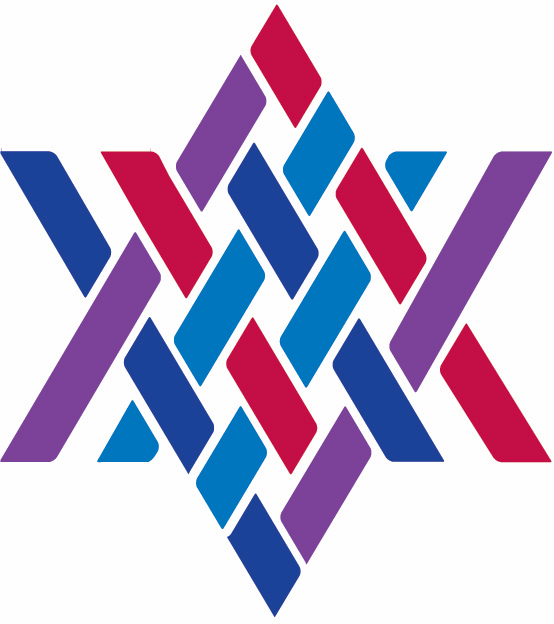Home > Divrei Torah > Parashat Naso 5779
Parashat Naso 5779
June 14, 2019
A D’var Torah for Parashat Naso
By Rabbi Heidi Hoover (’11)
Last week’s Torah portion, Bemidbar, started with a lot of counting of Israelites. This week’s Torah portion, Naso, also begins with counting. The word “Naso” means “take up,” as in “Take up a census of the Gershonites also” (Numbers 4:22). The counting in this Torah portion is of different clans of the Levites who have responsibilities to pack up and transport different parts of the Tabernacle when the Israelites decamp and move on through the wilderness.
We are told the final counts: There are 2,750 Kohathites between the ages of 30 and 50—which are the years when the Levites are responsible for the work of the Tabernacle; there are 2,630 Gershonites; and there are 3,200 Merarites, for a total of 8,580 Levites. This seems like rather a lot of people for the task of packing and moving the Tabernacle around, but the Torah doesn’t comment. It doesn’t bemoan the fact that there are fewer Gershonites or that there are more Merarites than others. It doesn’t make any value judgements at all about the numbers of people, in fact.
This is unheard of in our modern Jewish world. Not only do we like to count people, we always want to interpret the numbers and figure out what they mean. And a high proportion of Jews—or at least the ones who write about what the numbers mean—seem to believe that the numbers generally mean that we’re in trouble. The apparently growing percentage of Jews who consider themselves only culturally Jewish is frightening to many Jews. The percentage of Jews who are intermarrying frightens many Jews—though I look at how many active interfaith families we have in our congregation and am grateful to the non-Jewish parents and spouses who have become an integral part of our community.
We talk about numbers at a local level a lot, too. When people find out I’m the rabbi of a synagogue, they often ask, “How big is the congregation?” Even if they only ask generally about the synagogue, I find that the second or third thing I tell them is how many member families and individuals we have. When it comes to synagogues, often “large” is considered synonymous with “successful,” whether you’re talking about the number of members or an individual event. If you are or have been involved with a synagogue, think about events that have happened there. What characterizes a successful event? Frequently, our answer is: a lot of people showed up. When congregations discuss outreach efforts, it’s easy to fall into the thinking that success means an increase in membership.
One of the reasons we use number of people as a main metric for success is that counting people is easy. They’re there, you count them. The problem is that, if that’s the only metric, we miss a lot.
When the Levites are counted in our Torah portion, they might as well all be exactly the same, from what we’re told about them. There is no consideration about who might be better suited for different tasks, though I suppose there are enough of them that there’s probably someone suited to each task assigned to his clan. It seems like their individual experience doesn’t matter, only how many of them there are.
What if there are 10 people at a service, but five of them leave inspired by the sermon, and two more who came in troubled leave feeling significantly comforted? Was that service successful? Yes, because it made a difference in the lives of the people who were there, even if it was no more than a minyan. This is so much harder to measure, though. It’s subjective, it’s internal. It’s easier to just count the people.
Some of the questions we might ask if we want to look deeper than “behinds in seats” are: Whose connection to Judaism has deepened because of something she participated in? Who learned something that made his life better? Whose life has been transformed by involvement with a Jewish community? These questions are more important than simply whether or not someone showed up.
Though it is difficult to formally measure it, I appreciate hearing from people in my community what works for them and what doesn’t. Many people have spoken to me about sermons that touched them, or study sessions that have been thought-provoking and stuck in their heads. To me, that’s what’s important. It’s knowing that members of my community come because of the relationships they have here, because of the warmth they experience, and because they find nourishment for their souls here.
Last week we celebrated the Israelites’ experience of God at Mt. Sinai, when God gave the Torah. According to the Torah, that experience was for everyone who was standing there that day, and everyone who was not standing there that day. That isn’t about the number of people who were there, or the number of Jews that came after that. It’s about the personal connection each of us brings to Torah, to our spiritual history, to Judaism. That’s what brings us together, and no matter how many of us there are, what matters is that we support each other and follow our Jewish journeys wherever they take us next.
Let us focus on helping each other find richness of Jewish experience rather than focusing simply on how many people show up. Let us recognize others always as individuals and appreciate our differences and the strengths we each bring. May our participation deepen our spiritual lives, and may we have gratitude for every revelation.
___________
Rabbi Heidi Hoover (AJR ’11) has taught Conversion at AJR. She is the rabbi of B’ShERT: Beth Shalom v’Emeth Reform Temple in Brooklyn, NY.

